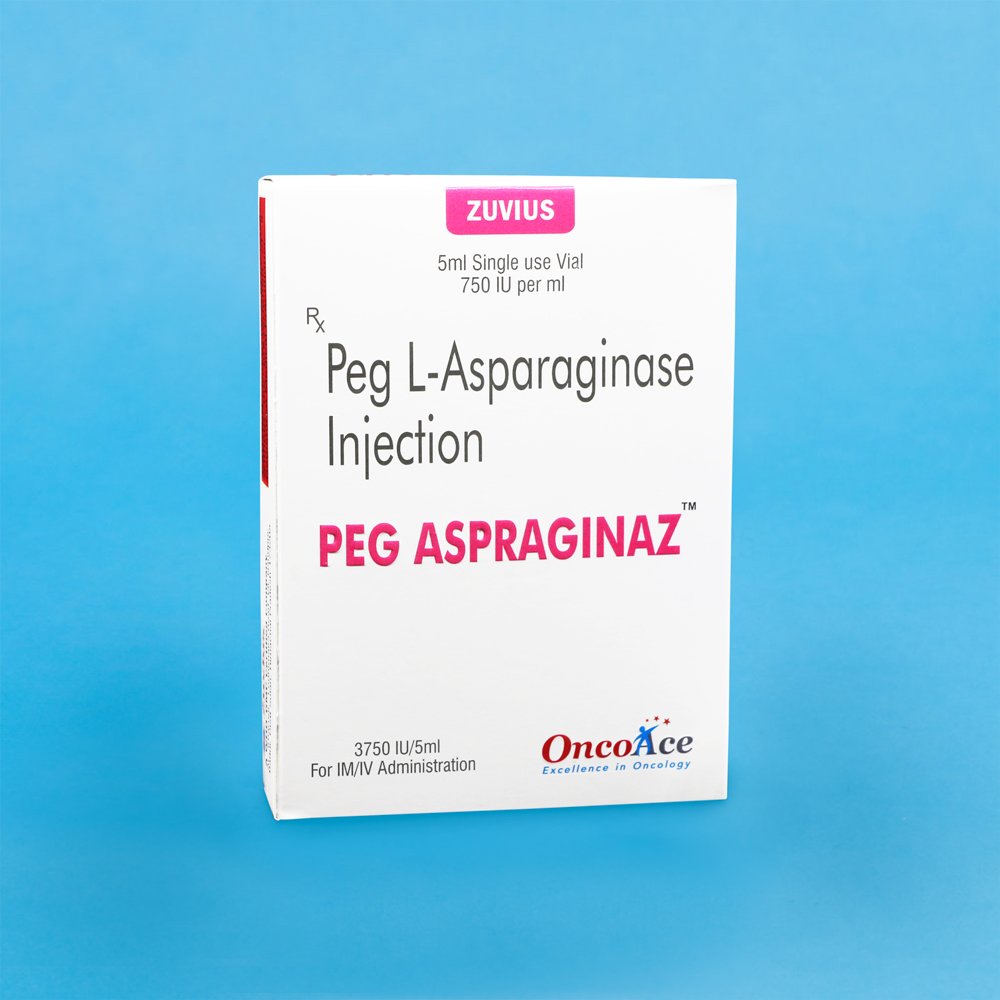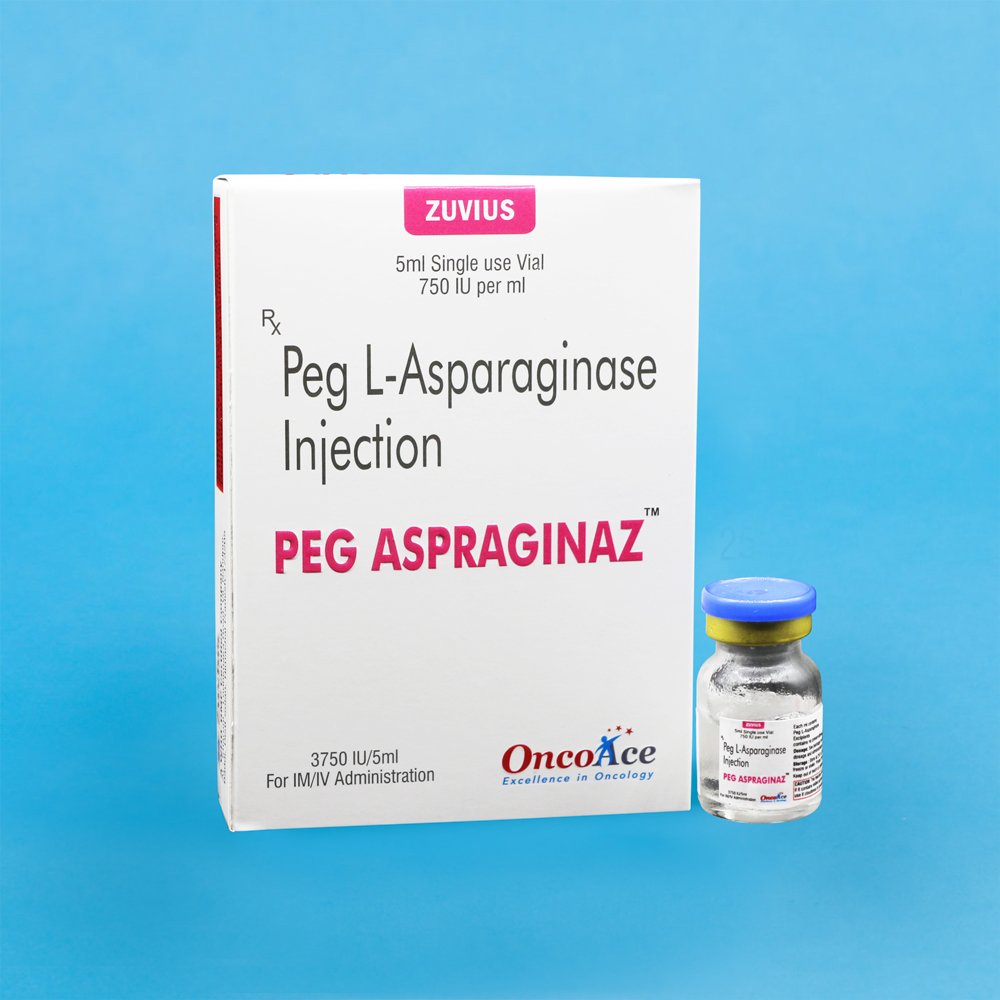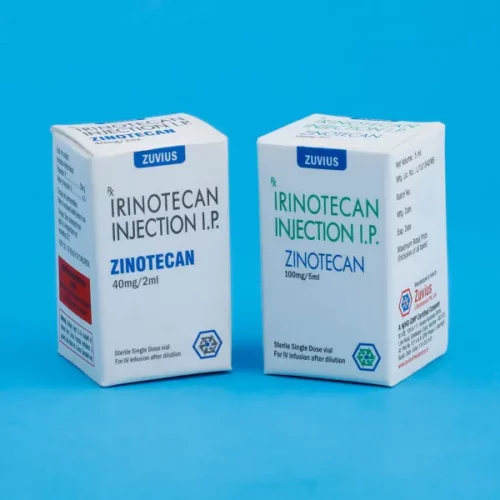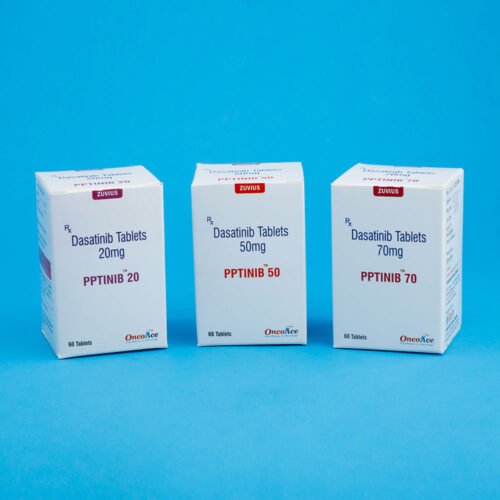PEG - Aspraginaz
Peg L- Asparaginase
Strength: 3750 IU
Pack Size: 1 vial
Drug Class: Antineoplastic agents
Dosage and Administration:
The recommended dose of PEG – Aspraginaz is 3750 International Units/m² intramuscularly (IM) or intravenously (IV) three times a week. When PEG – Aspraginaz is administered IM, the volume at a single injection site should be limited to 2 mL. If a volume greater than 2 mL is to be administered, two injection sites should be used. Discard unused portion.
Cold Storage: yes
PEG – Aspraginaz (asparaginase) contains the enzyme L-asparagine amidohydrolase, type EC-2, derived from Escherichia coli. PEG – Aspraginaz activity is expressed in terms of International Units according to the recommendation of the International Union of Biochemistry. One International Unit of asparaginase is defined as that amount of enzyme required to generate 1 μmol of ammonia per minute at pH 7.3 and 37°C. The specific activity of PEG – Aspraginaz is at least 225 International Units per milligram of protein.
PEG – Aspraginaz is indicated as a component of a multi-agent chemotherapeutic regimen for the treatment of patients with acute lymphoblastic leukemia (ALL).
The mechanism of action of PEG – Aspraginaz is thought to be based on selective killing of leukemic cells due to depletion of plasma asparagine. Some leukemic cells are unable to synthesize asparagine due to a lack of asparagine synthetase and are dependent on an exogenous source of asparagine for survival. Depletion of asparagine, which results from treatment with the enzyme L-asparaginase, kills the leukemic cells. Normal cells, however, are less affected by the depletion due to their ability to synthesize asparagine.
- Keep out of reach of children.
- Do not exceed recommended dose.
Anaphylaxis and Serious Allergic Reactions
Serious allergic reactions can occur in patients receiving PEG – Aspraginaz. The risk of serious allergic reactions is higher in patients with prior exposure to PEG – Aspraginaz or other Escherichia coli-derived L-asparaginases. Observe patients for one hour after administration of PEG – Aspraginaz in a setting with resuscitation equipment and other agents necessary to treat anaphylaxis (for example, epinephrine, oxygen, intravenous steroids, antihistamines). Discontinue PEG – Aspraginaz in patients with serious allergic reactions.
Thrombosis
Serious thrombotic events, including sagittal sinus thrombosis can occur in patients receiving PEG – Aspraginaz. Discontinue PEG – Aspraginaz in patients with serious thrombotic events.
Pancreatitis
Pancreatitis, in some cases fulminant or fatal, can occur in patients receiving PEG – Aspraginaz. Evaluate patients with abdominal pain for evidence of pancreatitis. Discontinue PEG – Aspraginaz in patients with pancreatitis.
Glucose Intolerence
Glucose intolerance can occur in patients receiving PEG – Aspraginaz. In some cases, glucose intolerance is irreversible. Cases of diabetic ketoacidosis have been reported. Monitor serum glucose.
Nursing Mothers
It is not known whether PEG – Aspraginaz is excreted in human milk. Because many drugs are excreted in human milk and because of the potential for serious adverse reactions in nursing infants from PEG – Aspraginaz, a decision should be made to discontinue nursing or to discontinue the drug, taking into account the importance of the drug to the mother.







